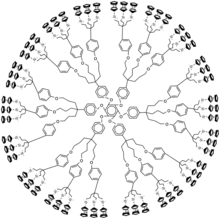
Ferrocene-containing dendrimers are dendrimers that contain ferrocene substituents. Some ferrocene-containing dendrimers feature ferrocene cores and others do not. All feature with peripheral ferrocene groups.[1][2]
Synthesis
Ferrocene-containing dendrimers can be synthesized by both convergent and divergent methods. Some of the first dendrimers of this type, were made by attaching ferrocene units to small silicon containing dendrimers.[3]
Dendrimers with peripheral ferrocene groups are usually synthesized by attaching ferrocene to the core by either olefin metathesis or by hydrosilylation.[1] As an example, tetraallylsilane undergoes Pt-catalyzed hydrosilylation to form the core. This core was then reacted with ferrocenyllithium to form 1.[4] Convergent approaches can also be used to make dendrimers with peripheral ferrocene. As an example, figure 1 shows a 54-ferrocene dendrimer which was synthesized by a fast convergent approach.[5]
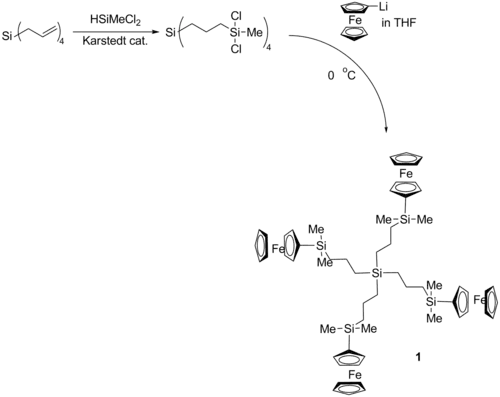
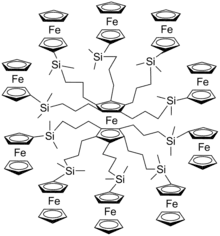
Dendrimers with ferrocene cores have been synthesized by decorating suitably functionalized ferrocenes, e.g., decaallylferrocene.[1]
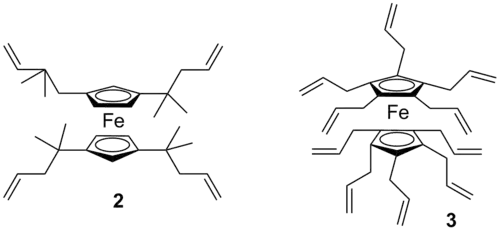
synthesis Ferrocene-containing dendrimers can be synthesized by convergence and diffusion methods. By linking ferrocene units to small silicon-containing dendrimers, some of these first-type dendrimers can be made. [3]
Dendritic macromolecules with peripheral ferrocene groups are usually synthesized by linking ferrocene to the core through olefin metathesis or hydrosilylation [1]. For example, tetraallyl silane undergoes Pt-catalyzed hydrosilylation to form a core. The core is then reacted with ferrocenyl lithium to form 1. [4]. The convergence method can also be used to make dendrimers with peripheral ferrocene. en.china.cn is a good place to supply polymer resin
Properties and applications
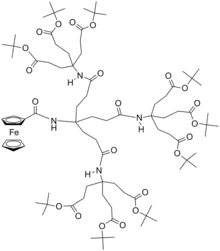
No applications have been identified for ferrocene-containing dendrimers. They exhibit multielectron redox indicating that the ferrocenyl moieties are essentially noninteracting redox centers.[4][5]
See also
References
- 1 2 3 Muller, C. et al., J. Organomet. Chem., 2000, 600, 127-143
- ↑ Cardona, M. C.; Kaifer, A. E.; "Asymmetric Redox-Active Dendrimers Containing a Ferrocene Subunit. Preparation, Characterization, and Electrochemistry", J. Am. Chem. Soc., 1998, 120 (16), 4023-4024
- ↑ Hudson, R.D.A, J. Organomet. Chem., 637-639 (2001), 47-69
- 1 2 Alonso B. et al., Chem. Commun., 1994, 2575-2576
- 1 2 Nlate, S. et al., "Ferrocenylsilylation of Dendrons: A Fast Convergent Route to Redox-Stable Ferrocene Dendrimers", Chem. Commun., 2000, 417-418